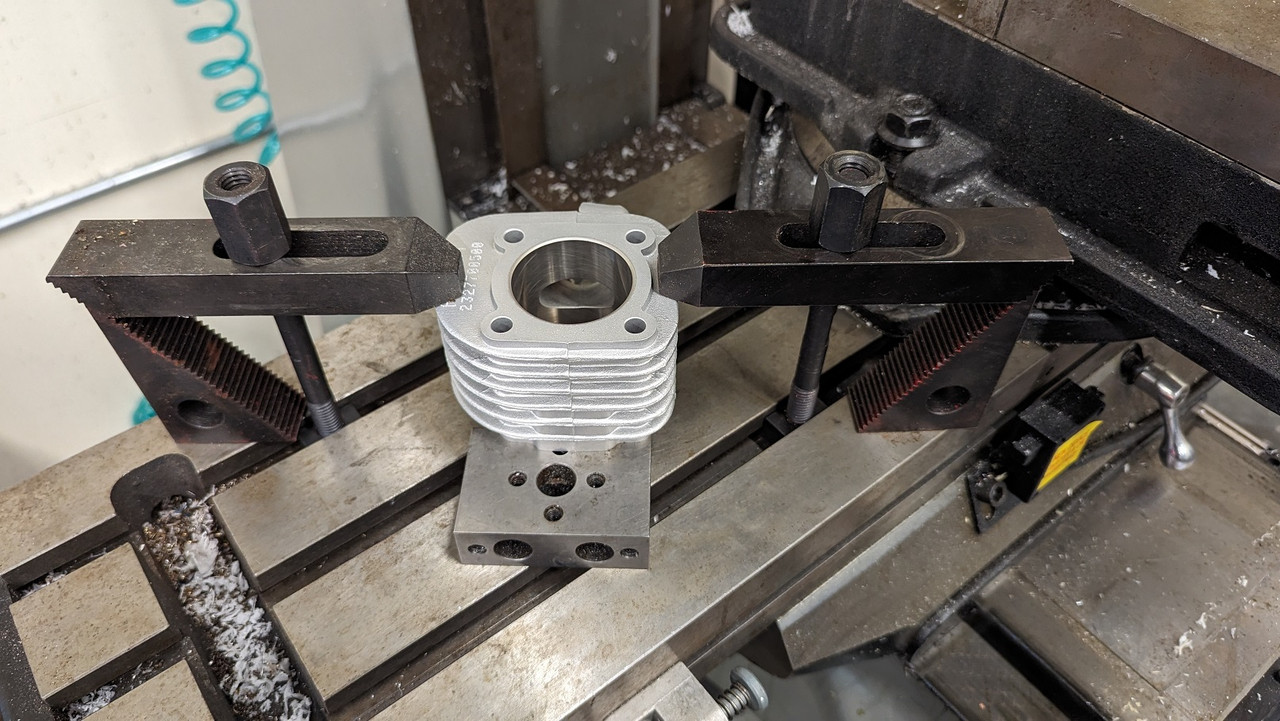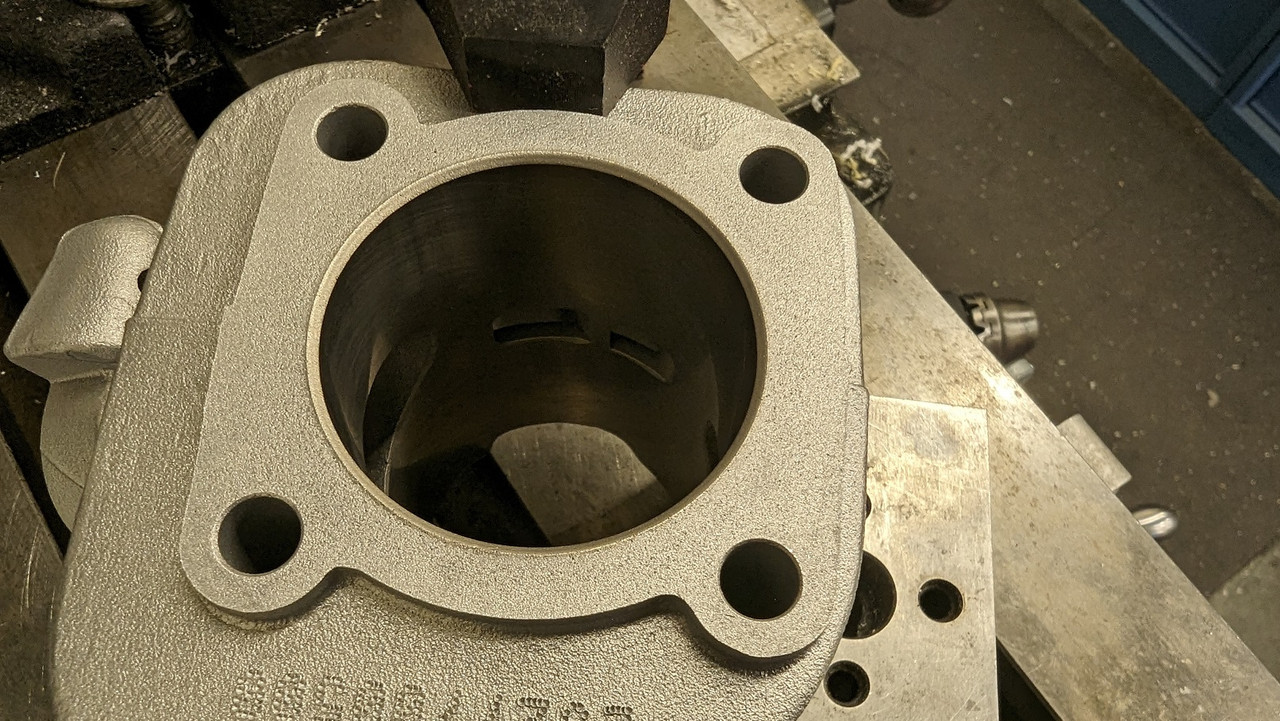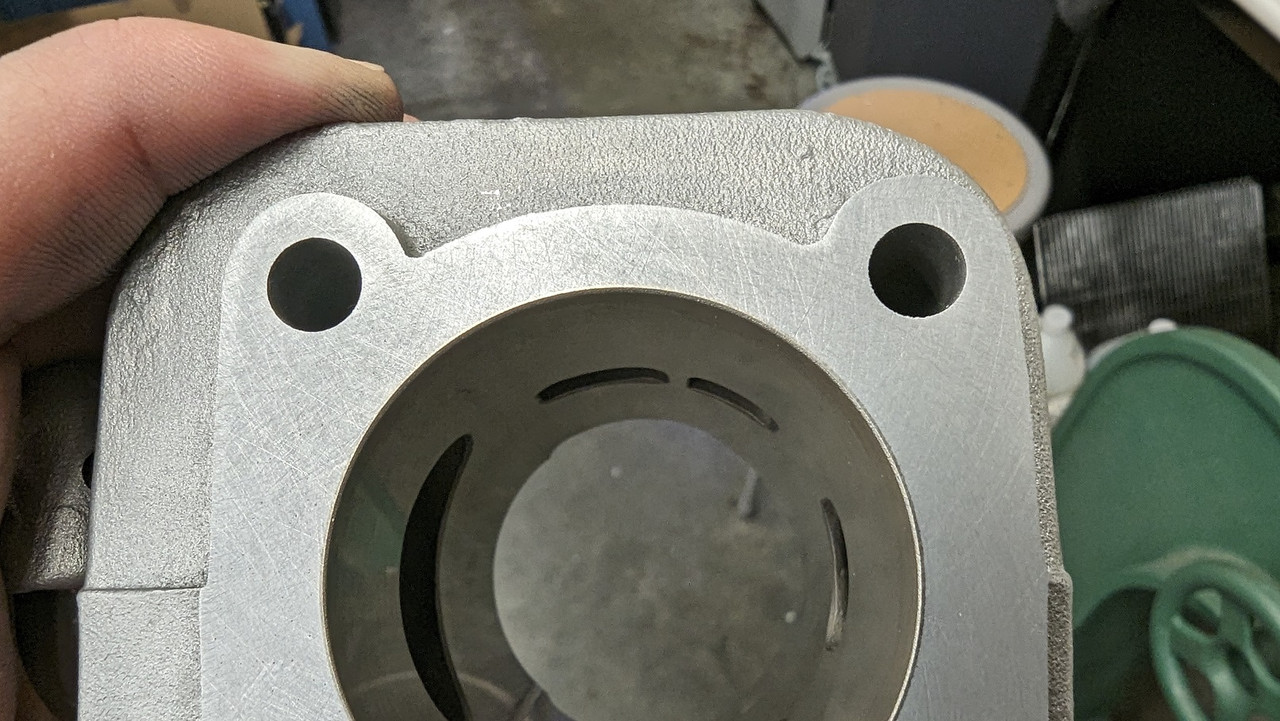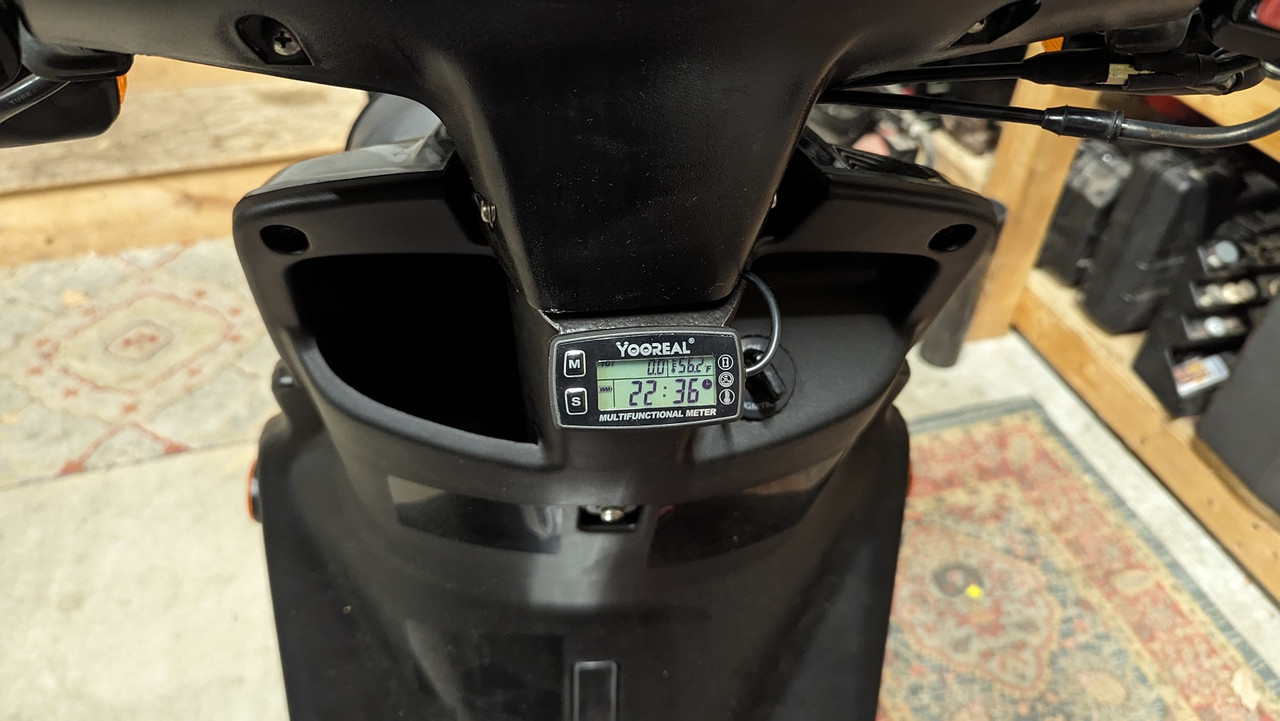bacon
Scoot Member
 
Posts: 55
|
Post by bacon on Apr 23, 2024 10:24:44 GMT -5
I just ordered an aluminum Athena BBK for my 2008 Zuma 50 and I've been reading about people having issues dialing in the squish despite having a plethora of shims/gaskets. Wondering what the opinion is on decking the cylinder or machining down the head to get the squish dialed in. I have a mill and could perform either, so I guess im wondering if this is recommended and if so, what the best path would be.
|
|
|
|
Post by Zino on Apr 23, 2024 19:27:15 GMT -5
I had a machine shop deck the head
I also have shaved the head by using a piece of glass with a piece of sand paper and made figure 8's .
I also have just used copper spray .
All of these I used to get squish closer to .9 mm
This way I had the ports lined up from maximum filling and evacuation.
|
|
|
|
Post by oldgeek on Apr 23, 2024 19:49:25 GMT -5
I have used all methods you mention, depending on desired results. Most often delete gaskets and use copper spray.
|
|
|
|
Post by Lucass2T on Apr 25, 2024 8:28:22 GMT -5
What squish are you after? 2mm? Otherwise I really won't see you have any problems with dialing in the right squish.
My experience is is that Athena makes excellent products.
I have a Metrakit SP3 (rebadged Athena Evo) and with the gaskets that come with it I can make a nice solid 0,6mm.
I can bring it down even more or bump it up to over 1mm.
|
|
bacon
Scoot Member
 
Posts: 55
|
Post by bacon on Apr 25, 2024 9:59:01 GMT -5
2mm? I'd end up with like 50psi compression with that kind of squish. Athena specs 0.9mm squish but from what others have said they end up north of that running no base or head gasket. Using Yamabond on the bottom and copper spray on the head they are still too high at over 1mm. Basically all those gaskets/shims are useless which is why I was looking into removing some material.
|
|
|
|
Post by Zino on Apr 25, 2024 12:12:23 GMT -5
If you are under 1.5 it still has a lot of spunk
Just getting closer to 1 will add more
It is not critical for function to get to .9 with the Athena sport
|
|
bacon
Scoot Member
 
Posts: 55
|
Post by bacon on Apr 28, 2024 12:50:38 GMT -5
Well I got my Athena kit in - the box says "race" on it but on the Athena website I don't see any Sport option listed. Hopefully I can still make it streetable under 10k rpm as I'm not really looking to make big power. I didn't notice the race designation until after I did my machine work so too late to return now.
I fit everything up with no gaskets and squish was .76mm. The top of the cylinder came un-machined with a cast or blasted surface finish. I wasn't confident that copper spray would seal that, so I decided to use the provided head gasket and machine the cylinder down. I took off .015" and after torquing everything down, squish came in at .85mm. pretty happy with that.
A couple questions for the group:
- will the stock oil pump still work or do I need to pre-mix now?
- is the oil pump adjustable?
- how bad will performance be with this "race" cylinder with the stock carb (85 main to start) and stock exhaust?
Eventually I will likely get something like a 19mm dellorto carb, exhaust, and some trans upgrades, but for now I just want to get it up and running to see what else needs attention.
|
|
|
|
Post by Zino on Apr 28, 2024 18:59:08 GMT -5
The Athena kit you have is the sport one is it has no head gasket and a single exhaust port
I have used the oil pump alone with plenty of builds Athena included that peak at 11k rpms and under .
The stock carbs will work ok but a bigger carb feeds and cools it much better .
I would use a temp gauge to protect your hard work .
|
|
bacon
Scoot Member
 
Posts: 55
|
Post by bacon on Apr 29, 2024 8:14:07 GMT -5
Yes, I had read that a temp gauge was a good idea so I already put a tach/temp gauge on and mounted it below the handlebars. I guess I still don't know what I have then...it has a single exhaust port but does have a head gasket (solid aluminum I believe). The kit I got was Athena part number 070200. The only other kit with a 10mm pin was P400485100098 and it was $125 more. Anyway, attached are some pictures from when I was machining. You can see the rough surface on the cylinder top (the head was nicely machined). After machining, I wet sanded down to 400 grit on a glass surface to make sure everything was flat and smooth. I havent had time to sit and tune yet, but I did test fire it and it popped right off and idled smooth at about 1900rpm. I was kind of surprised how well it was running to be honest. Looks like the battery is charging - I get about 14V at the battery when I rev it up a bit. Does anyone know what kind of voltage I should see to the auto-choke? When I start it and rev up a bit I only see about 0.7V coming through. Shouldn't I be getting 12V there to activate the valve? When I changed the jets out in the carb I bench tested the choke by hooking it to the battery so I know it works, but if I never get voltage to it on the bike I'll be running full choke all the time. Any thoughts?     |
|
bacon
Scoot Member
 
Posts: 55
|
Post by bacon on Apr 29, 2024 8:22:09 GMT -5
I just looked closer at the wiring diagram for this unit and it looks like the choke (7) is between the magneto (8) and the regulator/rectifier (6). Does this mean the auto-choke runs on AC? I guess the position makes sense - you wouldnt want the choke to get power when the switch is on but without the bike running, but it seemed weird to have uncontrolled AC voltage going to it. Am I reading this right?  |
|
bacon
Scoot Member
 
Posts: 55
|
Post by bacon on Apr 29, 2024 17:10:15 GMT -5
Went out after work and tested and it is indeed AC power. I just assumed everything was DC and due to the fact that it needed spray to start before the rebuild, I assumed lack of voltage there was going to be a problem. Glad I was wrong.
I'm tempted to take it for a spin since it seems to be running well, but since it's only 50F and I'm not 100% on the jetting yet I might wait a few days. I went from 80 to 85 main with the only other change being the bbk. Seems to be getting plenty of oil - smokier than I expected but I'm running some light pre-mix along with the oil injector for initial startup.
Maybe a silly question, but if I was a touch lean could that still cause damage if I was watching the temp and it doesn't overheat?
|
|
|
|
Post by Zino on Apr 29, 2024 18:06:26 GMT -5
You have the sport kit
the gasket I am talking about is the o-ring .
If you run it wide open and you are way lean then yes you could damage it .
The temp gauge is very good for keeping you in line
if you are running wide open and your temps are leveling off on long wide open runs below 350 is a good bench mark
At 1/2 to 3/4 throttle you should be settling in at a temp 10-30 degrees less on long runs with throttle held at those positions.
If you are sealed up tight with a slight upjet over stock you should be good.
To check for exhaust leak with scooter running take a wet rag and plug exhaust if it kills quick you are good if it keeps running you have a leak.
|
|
bacon
Scoot Member
 
Posts: 55
|
Post by bacon on May 3, 2024 21:01:13 GMT -5
Is it normal for these aluminum cylinders to run cool? I installed a temp gauge and the highest I've seen is about 220F. Thought it might be defective so I checked with an IR gun and it seems right. Head and exhaust flange was about 190, exhaust got cooler as I went down the pipe until I got to the muffler... The cat/ muffler was 460F.
Its only 70F out tonight. Are these temps normal? Seems to run well for something with a restrictive stock exhaust
|
|
|
|
Post by Zino on May 3, 2024 21:22:24 GMT -5
Aluminum does run cooler it also heats up faster than cast iron to operating tempature
|
|